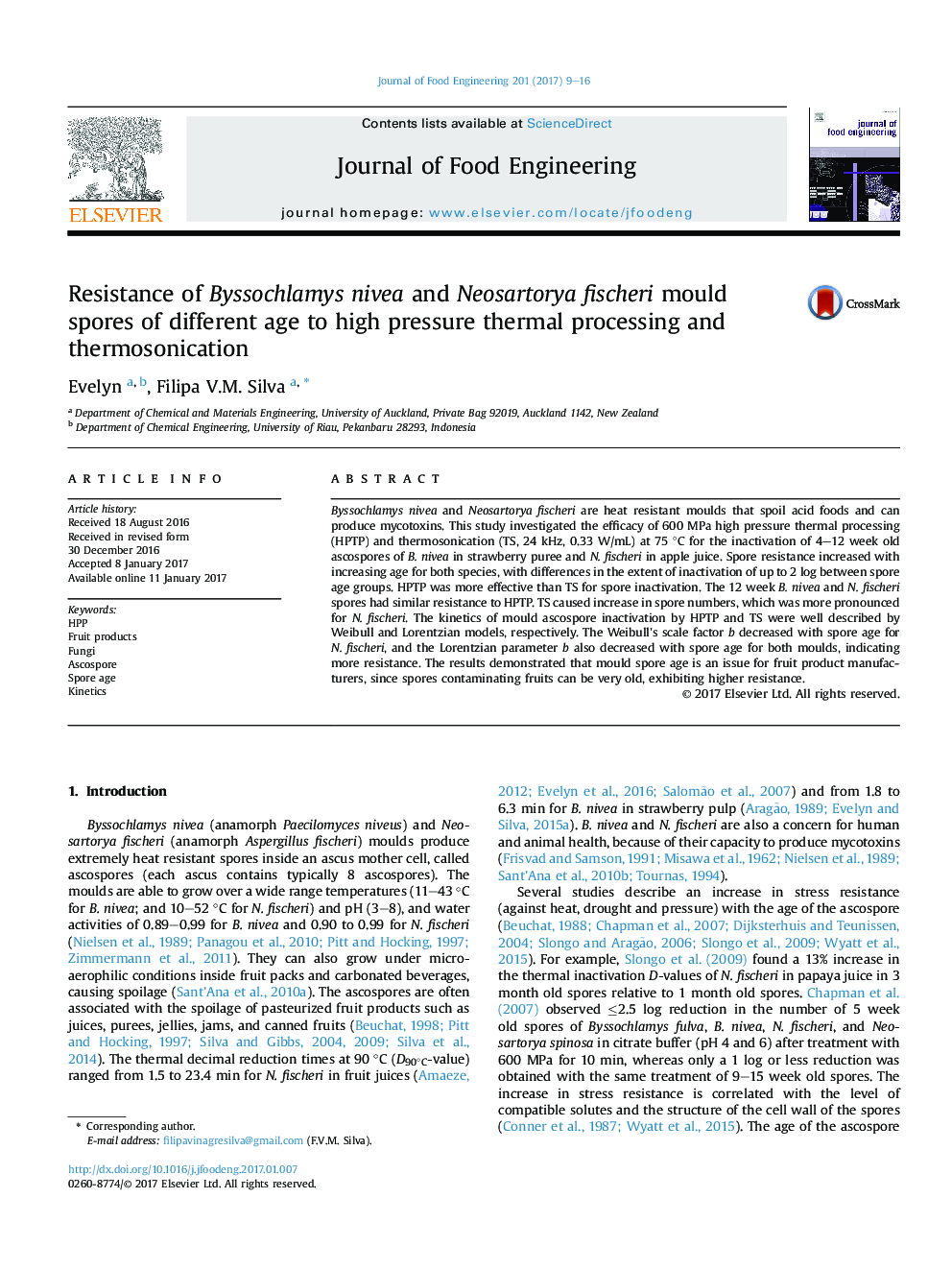| کد مقاله | کد نشریه | سال انتشار | مقاله انگلیسی | نسخه تمام متن |
|---|---|---|---|---|
| 6477568 | 1427100 | 2017 | 8 صفحه PDF | دانلود رایگان |

- B. nivea and N. fischeri ascospore resistance to HPP-thermal and TS increased with spore age.
- The spores of N. fischeri were more resistant than B. nivea to thermosonication (TS).
- HPP Weibull scale factor (b) decreased with spore age for N. fischeri.
Byssochlamys nivea and Neosartorya fischeri are heat resistant moulds that spoil acid foods and can produce mycotoxins. This study investigated the efficacy of 600 MPa high pressure thermal processing (HPTP) and thermosonication (TS, 24 kHz, 0.33 W/mL) at 75 °C for the inactivation of 4-12 week old ascospores of B. nivea in strawberry puree and N. fischeri in apple juice. Spore resistance increased with increasing age for both species, with differences in the extent of inactivation of up to 2 log between spore age groups. HPTP was more effective than TS for spore inactivation. The 12 week B. nivea and N. fischeri spores had similar resistance to HPTP. TS caused increase in spore numbers, which was more pronounced for N. fischeri. The kinetics of mould ascospore inactivation by HPTP and TS were well described by Weibull and Lorentzian models, respectively. The Weibull's scale factor b decreased with spore age for N. fischeri, and the Lorentzian parameter b also decreased with spore age for both moulds, indicating more resistance. The results demonstrated that mould spore age is an issue for fruit product manufacturers, since spores contaminating fruits can be very old, exhibiting higher resistance.
Journal: Journal of Food Engineering - Volume 201, May 2017, Pages 9-16